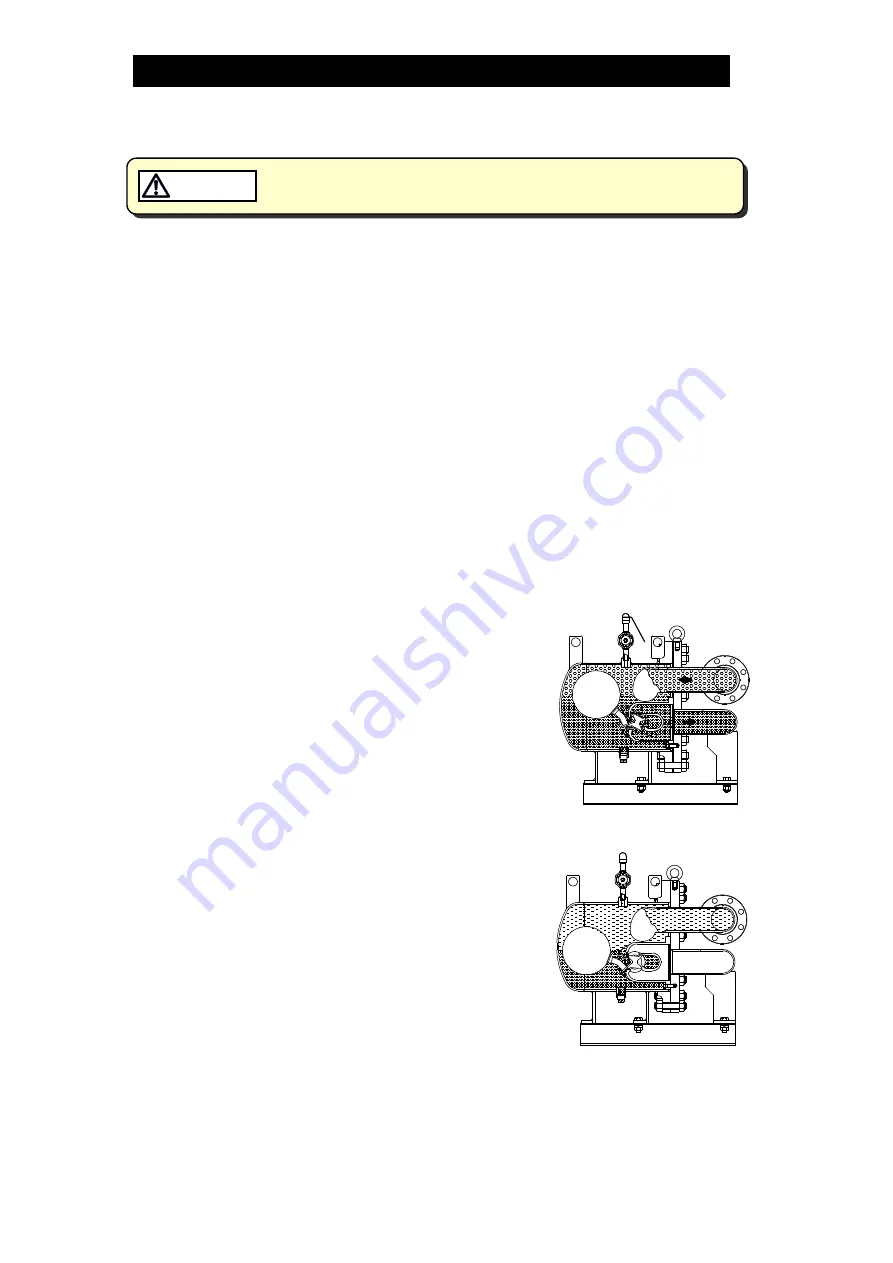
172-65288MA-02 (SW1U-A/SW1U-B) 6 Feb 2019
5
Checking the Piping
Use only under conditions in which no water hammer will occur. The
impact of water hammer may damage the product, leading to fluid
discharge, which may cause burns or other injury.
CAUTION
Check to make sure that the pipes to be connected to the trap have been installed
properly.
1. Is the pipe diameter suitable?
2. Is the piping where the trap is to be installed horizontal?
3. Has sufficient space been secured for maintenance?
4. Have isolation valves been installed at the inlet and outlet? If the outlet is subject
to back pressure, has a check valve been installed?
5. Has a bypass line been installed properly?
6. Is the inlet pipe as short as possible, with as few bends as possible, and installed
so the liquid will flow naturally down into the trap?
Operation
Principles of condensate discharge:
At start-up, open the bypass valve to remove any initial
condensate or air at 100
°
C (212
°
F) or less.
(This step must be performed in order to ensure
smooth start-up.)
Air binding occurs when the inflow of steam is
accompanied by the inflow of air during normal
operation. Whenever air binding occurs, it can be
released by opening the bellows sealed valve to
discharge the air.
After air is discharged, the bellows sealed valve must
be closed.
As condensate flows into the trap, the rising
condensate level causes the float to rise due to
buoyancy, automatically opening the valve and
allowing condensate to be continuously discharged.
When this occurs, the opening size of the valve varies
depending on the condensate flow rate.
As the condensate is discharged, the condensate level
falls, causing the float to fall, thereby automatically
closing the valve.
The valve remains closed as long as no condensate
enters the trap.
Bellows Sealed
Valve














